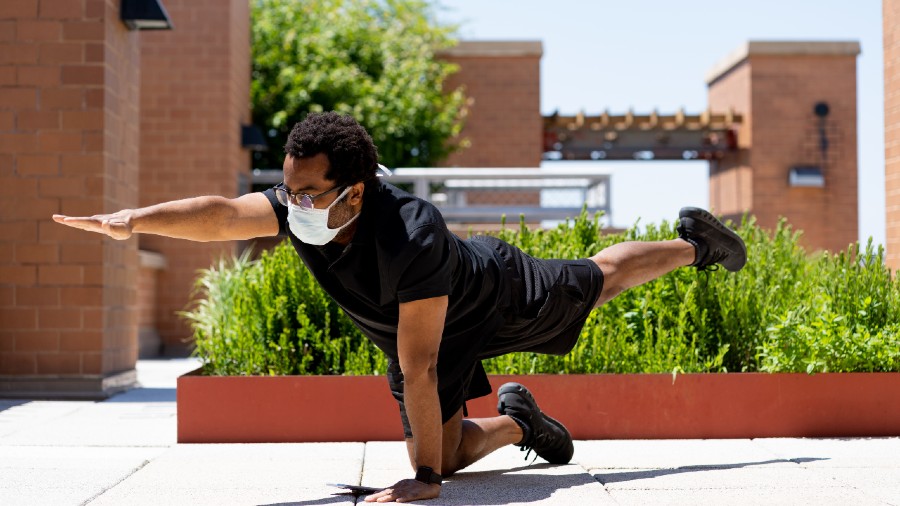Exercising during the pandemic has been challenging for many of us. Gyms have closed or limited occupancy, as have parks, pools, pathways and other recreational facilities. If trails are open, they often are jammed, making it difficult to socially distance while we hike, stroll, ride, jog or otherwise work out.
Mask recommendations and requirements have created additional complications. Few people who exercise don masks with enthusiasm when it comes to vigorous workouts, convinced they will make our faces sweaty, breathing laboured and workouts more draining. We rejig the timing and locales so we can exercise when not many people are about and leave our faces uncovered. Or we skip workouts altogether.
But for those convinced that a mask will make exercise unpleasant, two new studies offer a bracing counterpoint. Both find that masks do not negatively affect vigorous workouts, whether the mask is cloth, surgical or an N95.
Most of our expectations about masks and exercise are based on anecdotes and preconceptions. Little past science has examined how masks affect serious workouts. The few relevant earlier experiments focussed primarily on masked healthcare workers while they walked, to see if being masked affected their thinking or other capabilities. (It did not, the studies show.)
But gentle strolling is not running, cycling or other more vigorous routines, and we have not had scientific evidence about how wearing a mask might alter those workouts. So, recently, two groups of scientists separately decided to look into the issue.
The first of the groups to release their findings, published in The Scandinavian Journal of Medicine & Science in Sports, concentrated on surgical and N95 respiratory masks. The researchers, most of them affiliated with the Rambam Health Care Campus in Haifa, Israel, invited 16 healthy, active men to come into the lab, where they checked heart rates, blood pressure, oxygen saturation, respiratory rates and current carbon dioxide levels. Then they fitted the men with thin, nasal tubes that would collect their expired breaths for testing and, on three separate visits to the lab, asked them to ride a stationary bicycle.
At each visit, the men completed a pedal-to-exhaustion test, during which the researchers gradually increased the resistance on the bike, as if on a long, relentless hill climb, until the men could barely turn the pedals. Throughout, they monitored the riders’ heart rates, breathing and other physiological measures and asked repeatedly how hard the riding felt.
During one ride, their faces were uncovered. For the other two, they donned either a disposable paper surgical mask or an N95 respirator mask.
The scientists compared the physiological and subjective responses and found few variations. Masking had not made the cycling feel or be more draining and had not tired riders sooner. The only substantial effect was from N95 masks, which slightly increased levels of carbon dioxide in riders’ breaths, probably because the masks fit so tightly. But none of the riders complained of chest tightness, headaches or other breathing issues.
Most expressed some surprise, instead, that the masks had not bothered them, said Dr Danny Epstein, an attending physician in the internal medicine department at Rambam Health Care Campus, who led the new study.
Similarly, the researchers in the second study, published in The International Journal of Environmental Research and Public Health, hypothesised that masking would make exercisers uncomfortable and tired. For confirmation, they ran a group of 14 healthy, active men and women through the same ride-to-exhaustion sessions, while the volunteers alternately wore no mask or a three-layer cloth or a surgical face covering. The researchers monitored oxygen levels in the blood and muscles, heart rates, other physiological measures and the sense of how hard the exercise felt.
Afterward, contrary to their hypothesis, they found no differences in the riders’ experience whether they had worn a mask or not. “ I don’t think masks are likely to make workouts feel worse,” said Philip Chilibeck, a professor of kinesiology at the University of Saskatchewan in Canada, who oversaw the study.
Of course, both the studies recruited healthy, active adults. We do not know if the results would be the same in the older or younger in worse shape or have existing breathing problems. The studies involved cycling. The outcomes probably would be similar in running, weight training and other vigorous activities.
Still, the findings suggest that anyone who hesitates to wear a mask should try one — although not an N95, Epstein said. “Covid-19 changes almost every aspect of life but we can learn how to keep doing the essential things, such as exercise,: he said. “I believe we can get used to going to the gym,” and paths and sidewalks and busy trails, “with a mask”.
NYTNS











